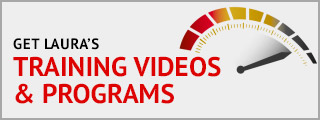21. Journal your meeting notes. Many people don’t know how to use the Journal feature in Outlook or even what it’s for! If you’ve ever accidentally clicked it, you’ll get a pop-up box that asks you if you’re SURE you want to turn on the Journal. Most people freak out and click NO. Next time, click yes. Open a new Journal entry, type up your meeting notes, put in the day/time of the meeting, indicate in the Contacts field who was at the meeting, and select a Category for the meeting name or project. When you select that Contact and click the Activities tab, you’ll be able to see the Journal entries (notes) from every meeting you’ve ever had with that person. You can also pull up your Journal entries by Category to review meeting notes as far back as you’d like. OR give your notes to your assistant, have him type them up in the text field of the original meeting notice, save, and send a message to attendees (under Actions).
22. Avoid meetings on Fridays. Many departments and teams just decide as an informal policy to schedule meetings Monday-Thursday if at all possible. Too many people try to take long weekends or duck out early, making scheduling and rescheduling a nightmare on these days, plus you’ll end up with a lot of no-shows. I try to leave Fridays open for personal appointments. I find if I put a doctor’s appointment in between business meetings, something always happens to derail one or the other. It’s hard to get my mind switched between different realms as well.
23. Always send or request an agenda and include it in the text portion of the appointment or include as an attachment. A basic agenda should include a statement of purpose (see #13), any logistical considerations, the decisions to be made, a list of the topics to discuss (in priority order), who is responsible for that item, and how long you are allotting for each one. Ask participants if they have any changes to the agenda items to let you know in advance of the meeting, so you can make adjustments if necessary. Once you get into the meeting, follow the agenda diligently, so you can ensure all points are covered, decisions are made, and the objective is achieved.
24. Don’t let Outlook pick the length of your meeting. The default is one hour, so that’s how much time people normally schedule meetings! Instead, match the length of the meeting to the purpose. If you’ve done an agenda (see #23), and you’ve determined you’ll only need forty minutes, then schedule for that. Time will expand to fill the amount of time available. If you’ve promised folks you’ll be out of there, people tend to work toward that goal. If there is slack time, more socializing will naturally take place and an hour will definitely get used. Some people try to build in “buffer” time—don’t cave to this habit. I purposefully under-schedule and announce the goal at the beginning, so everyone is actively moving forward.
25. For longer meeting, allow enough breaks. Give a break at least one break for every hour and 15 minutes, max. Let attendees know at the outset what to expect. If you keep rambling on, and they aren’t sure when they’ll get a bio break, they will just start getting up randomly and sneaking out. If you clearly state at the beginning, “We will meet from now until 10:00, and then we’ll break until 10:10,” etc. It is also common courtesy that if you’re meeting over a lunch hour to provide food.
26. Be considerate of those in other time zones. If you’re in the Pacific Time zone, and some of your meeting participants are calling in from the east, a 2:00 meeting puts them into departure time. Realize that people may have childcare commitments at the end of the day; an afternoon meeting (or vice versa for early mornings on the west coast) can severely inconvenience folks and reduce the odds of attendance.
27. Strike a balance on when to schedule a meeting. If you schedule a meeting too far out, you’ll get a bunch of cancellations and requests to reschedule as you get closer—or you’ll just get trumped by someone higher up. If you wait to schedule a meeting until the last minute, it’s hard to find a block of time when most people are readily available. So it’s best to schedule around one to three weeks in advance. Anything sooner than that or further than that is fraught with scheduling challenges and conflicts.
28. Let the meeting leader know as soon as you’re aware of a conflict with a scheduled meeting. If you have a change in your calendar but don’t want to “rock the boat,” you inconvenience more people the longer you wait. It takes effort to work schedules around appointments, so as soon as you know, raise the flag. The chair can determine if they can make it without you or if the meeting should be moved.
29. Display multiple Outlook windows at one time. Perhaps you want to see your calendar while looking at an email. While in your Inbox, right-click on your Calendar (either on the Folder List or the icon) and select “Open in New Window.” Outlook will open your Calendar in a separate window, which you can resize and move to where it’s most convenient for you, while still being able to switch back to the Inbox. This is especially useful if you have a large monitor or dual monitors.
30. Customize your Calendar to your preferences. Don’t be satisfied with the standard calendar layouts—make it your own! For example, you can automatically add holidays to your calendar. On the Tools menu, click Options, then Calendar Options, and then click Add Holidays. The weekends are also compressed by default. If you want to show Saturday and Sunday as separate boxes, right click in the Calendar and select Other Settings. Uncheck the box that says Compress Weekend Days. While you’re there, change the default setting for 30-minute time slots to 5, 6, 10, 15, or 60 minute slots (I use 15). Frequently schedule with people in another time zone? Avoid confusion by displaying another zone. Under the Tools menu, select Options. On the Preferences tab, click Calendar Options, Time Zone, and “Show an additional time zone” check box. Select the desired time zone and OK out of there.
(c) 2008 Laura Stack. All rights reserved. www.TheProductivityPro.com


